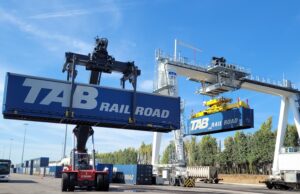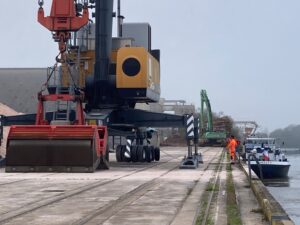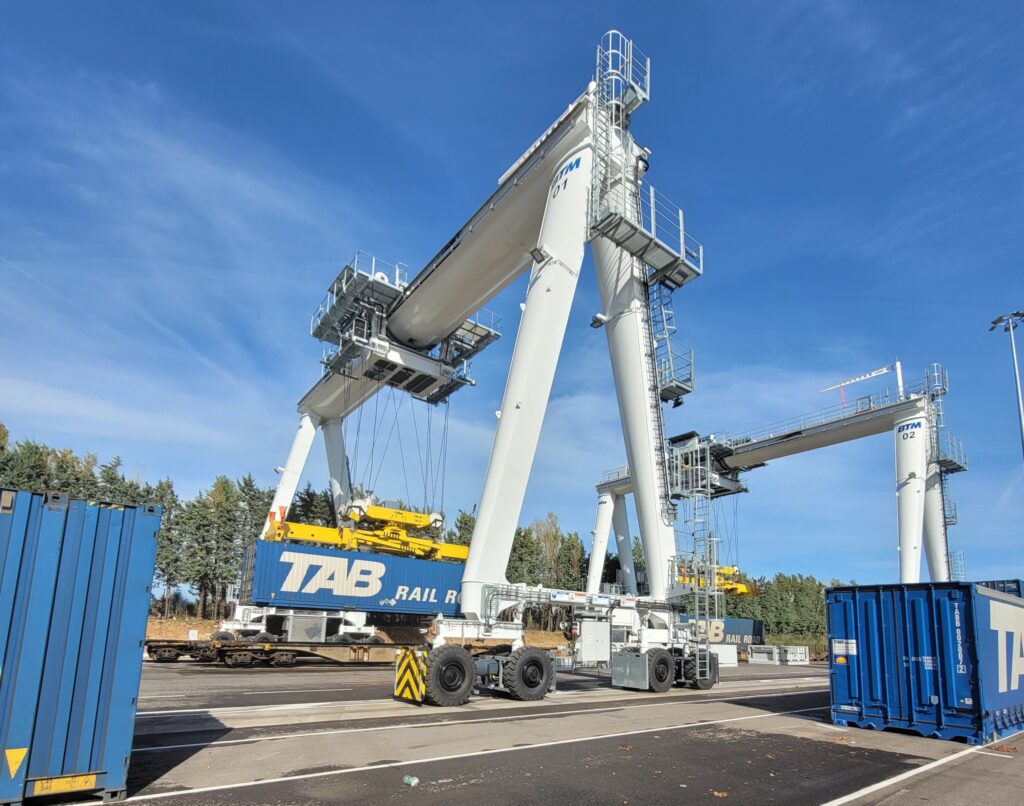PROFESSION LOGISTIQUE N°7 – SPRING 2025
Launched by the AI Cargo Foundation, the Appel d’aiR program aims to facilitate the modal shift of companies towards rail and inland waterways. With a budget of 7 million euros, it offers an innovative approach based on the sharing of flows and the detailed analysis of transport data.

Antoine Mionnet, treasurer of the AI Cargo Foundation, reveals the latest advances in this program which already has 170 member companies.
Appel d’aiR program
The Appel d’aiR program has experienced sustained growth since its launch. “Today, we have about 170 companies using the platform, from various sectors such as mass retail, the automotive industry or even trading,” explains Antoine Mionnet. This diversity reflects the growing interest of economic actors in alternative transport solutions to road. If the major groups were the first to join the initiative, the program now seeks to expand its scope. We want to reach more SMEs and large SMEs, which are generally farther away from these modes of transport. They have less knowledge and internal means to work on these subjects ,” mentions Antoine Mionnet.
An innovative territorial approach
We decentralize our action by intervening at events organized by the CCI, logistics clubs, clusters and sectoral federations. The territories have this detailed knowledge of local economic activity that we do not necessarily have at the national level, particularly regarding SMEs. Our AMI offers them a tool and a turnkey approach to animate the topic of modal shift. We provide a budget that allows for the financing of engineering in the territory. A design office is mandated by Appel d’aiR and the community to contact companies, raise their awareness and collect their flow data.
The data at the heart of the device
 To reach SMEs and mid-caps, AI Cargo Foundation deploys a proximity strategy across territories. “We decentralize our action by intervening at events organized by the CCI, logistics clubs, clusters and sectoral federations,” explains Antoine Mionnet.
To reach SMEs and mid-caps, AI Cargo Foundation deploys a proximity strategy across territories. “We decentralize our action by intervening at events organized by the CCI, logistics clubs, clusters and sectoral federations,” explains Antoine Mionnet.
This territorial strategy is concretized by the launch of a call for expressions of interest (AMI) aimed at communities. The territories have this detailed knowledge of local economic activity that we do not necessarily have at the national level, particularly regarding SMEs. Our AMI offers them a tool and a turnkey approach to animate the subject of the modal report“, emphasizes Antoine Mionnet. This approach marks a break with traditional methods of analyzing the potential of modal report. Historically, the territories have been working for several years in a rather traditional way, by carrying out studies based on statistics, notably the Sitram database. But this data has not been updated for years and only allows a macro view, from department to department “,explains the treasurer of AI Cargo. The limits of these classic methods are numerous: ” Today, statistics are no longer updated. There are no longer necessarily sufficiently populated databases that allow this type of analysis. All the analyses that depend on stats are very unqualitative and only allow for results that give a really very general potential without detailed knowledge of the companies and flows concerned. ‘, détails Antoine Mionnet.
The AMI aims to overcome these limitations by offering territories comprehensive support. We provide a budget that allows for the financing of engineering in the territory. A design office is mandated by Appel d’aiR and the community to contact companies, raise their awareness, and collect their flow data ,” he says. This territorial approach also makes it possible to overcome the limits of traditional commercial prospecting by rail or river operators. Antoine Mionnet adds: “If we take a prospecting approach of a railway operator in a given territory, it will only have the vision of potential through the knowledge of its market, which depends on its commercial means. The idea is to go beyond this single-operator vision and have a more comprehensive vision at the territorial level.
The platform thus plays a trusted third party role, allowing data to be aggregated while ensuring their confidentiality. This unique position allows identifying mutualization opportunities that would otherwise remain invisible: « By aggregating these flows, we can bring out potential. We can identify that from point A to point B, in connection with this territory, there are sufficiently significant flows to develop a new rail or river transport offer. ».
The data at the heart of the device
The originality of Appel d’aiR lies in its approach based on real company data. “We start directly from the transport flows that companies provide us, their transport plans and their transport orders. This data is much more qualitative”, explains Antoine Mionnet. This methodology has a major advantage: “By analyzing the loader data, we have access to raw information: the pickup location from the industrial site to the final customer. Unlike the data of commission agents or carriers, which already integrate their own optimization logics and logistics organization schemes”.
Emerging concrete results
If the implementation of a modal shift requires time and significant logistical adaptations, the Appel d’aiR program is starting to bear fruit. However, the approach still retains! – a progressive character: « The modal shift is not done in a snap like loading a truck. It is necessary to set up means and readapt its logistics». The first tangible results mainly concern rail transport. “Today we have four emblematic cases of success,” explains Antoine Mionnet. First example: Logilec, the logistics subsidiary of the E. Leclerc group, with the support of the Déméter club, which has managed to transfer part of its flows to rail. This conversion of a major player in the retail sector illustrates the relevance of the program for regular and large flows.
In a completely different sector, Valrhona, a renowned producer of high-end chocolate, has also taken the plunge. This case is particularly interesting because it demonstrates that even for sensitive and high value-added products, rail transport can be a viable alternative to “all-road”. The third example concerns IFCO, a specialist in packaging solutions for the food industry. This company has adapted its logistics flows to integrate rail transport, thus proving that the modal shift can adapt to the specific constraints of the packaging sector.
Finally, Valorplast, a player in waste recovery, completes this first panel of successes. This case illustrates particularly well the interest of rail for recycled material flows, a sector where volumes are high and margins often reduced. “It is possible that other successes exist without us being aware of them yet,” says Antoine Mionnet. Indeed, the program provides information and initial support, but does not intervene directly in the organization of transport. ” At some point, we provide the information, but we are not transport organizers, so we don’t necessarily know what happens next”, he says.
These initial successes demonstrate the programme’s ability to support companies with very different profiles in their transition towards rail and inland waterways. From retail to luxury, including industry and recycling, these examples cover a wide range of activities and logistical constraints. To accelerate this dynamic, the programme is based on a reinforced territorial approach. “Thanks to the AMI territory, we hope to have regions and other territorial actors who will contribute to the emergence of new modal shift potentials,” explains Antoine Mionnet.
This territorialized approach should allow to identify new opportunities of mutualization and thus new cases of success. Inland waterway transport, although an integral part of the programme, has not yet given rise to concrete cases of modal shift. However, the analysis of flows via the platform could bring out opportunities in this field. These initial results, obtained after an initial phase of deployment and awareness-raising, suggest an acceleration of the modal shift in the coming months, as the program matures and new companies join the process.
A solution adaptable to sectors

Beyond its general framework, Appel d’aiR demonstrates its ability to adapt to the specific needs of sectors. The example of the cereal sector is particularly revealing: “We have developed Coesio, a variation of Appel d’aiR adapted to the needs of cereals. The objective is to optimize the use of the rail for exports via the port of Rouen, the first European grain port. This adaptability could benefit other sectors: ” The chemical sector, for example, which has seen its rail transport offer deteriorate with the standstill of the isolated wagon, could use our platform to consolidate its needs and demonstrate to operators the existence of a sufficient volume”.
Perspectives and developments
The program, which runs until the end of 2025, has good prospects for extension. “We still have some budget available and we note a strong support from the sector.” The initial target of 250 labeled companies seems within reach. For territories interested in the AMI, the schedule is as follows: applications open on 10 February, close on 21 March and announcement of winners on 2 April. The selected communities will benefit from comprehensive support: “The program finances territorial engineering, with a design office mandated for raising awareness among companies and collecting data, as well as the expertise needed to analyze modal shift potentials,” concludes Antoine Mionnet.
With a modal shift target of two billion tonnes/km by 2025, Appel d’aiR is a key player in the evolution towards greener logistics.
Article of PROFESSION LOGISTIQUE : https://professionlogistique.com/wp-content/uploads/2025/04/PDF_PL_N%C2%B007-compresse.pdf

